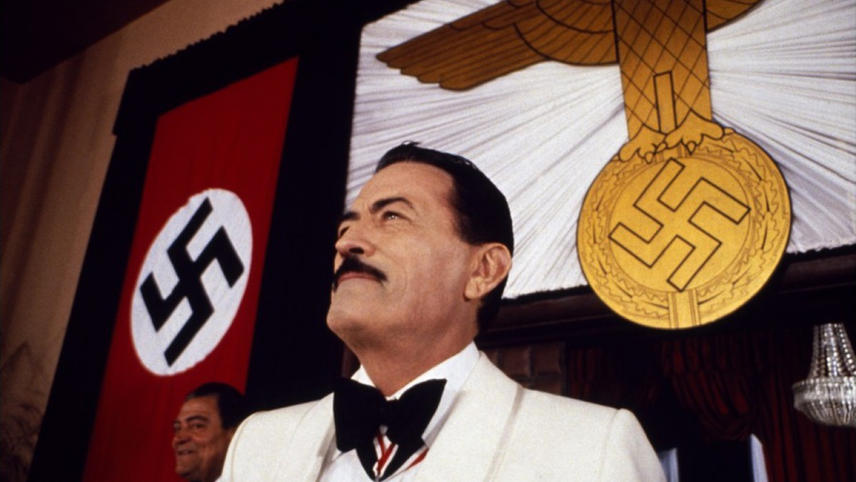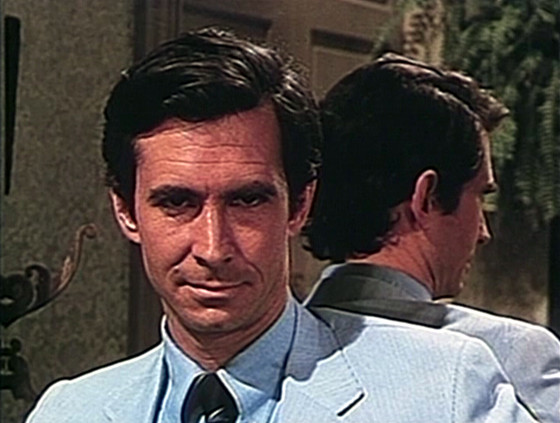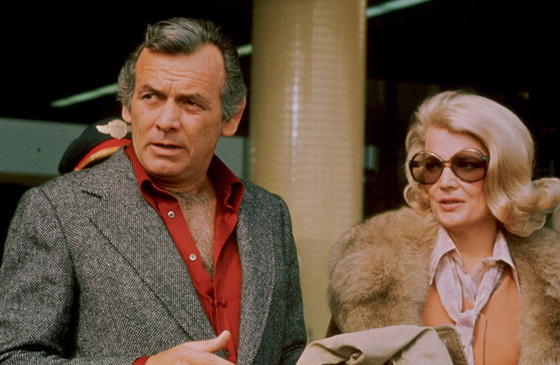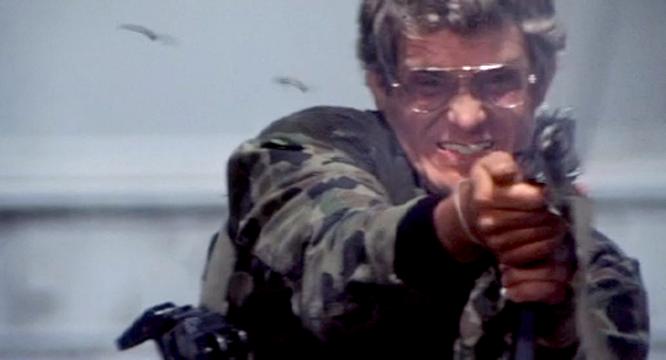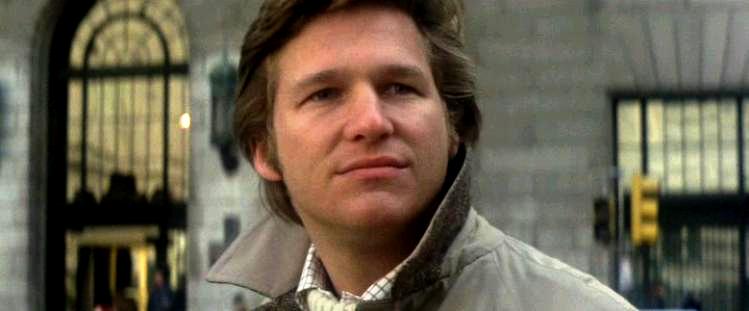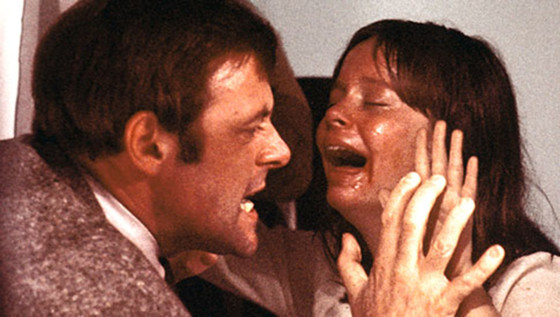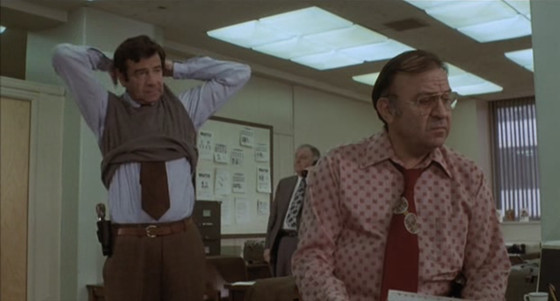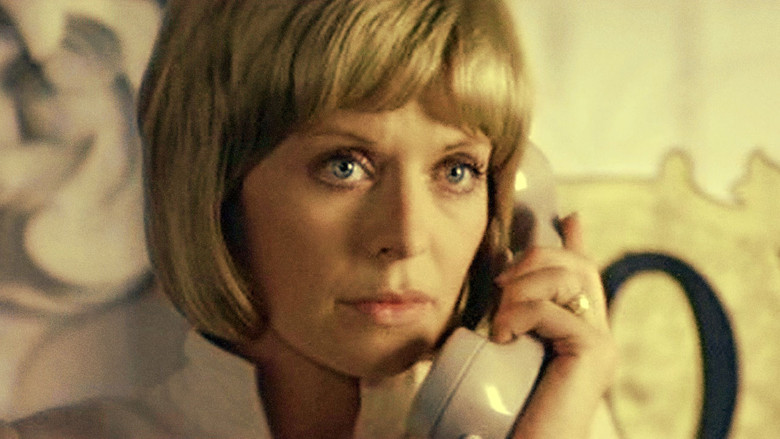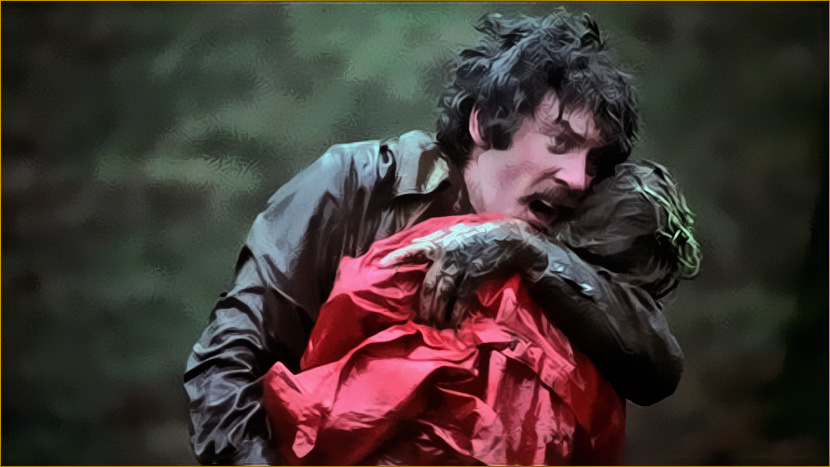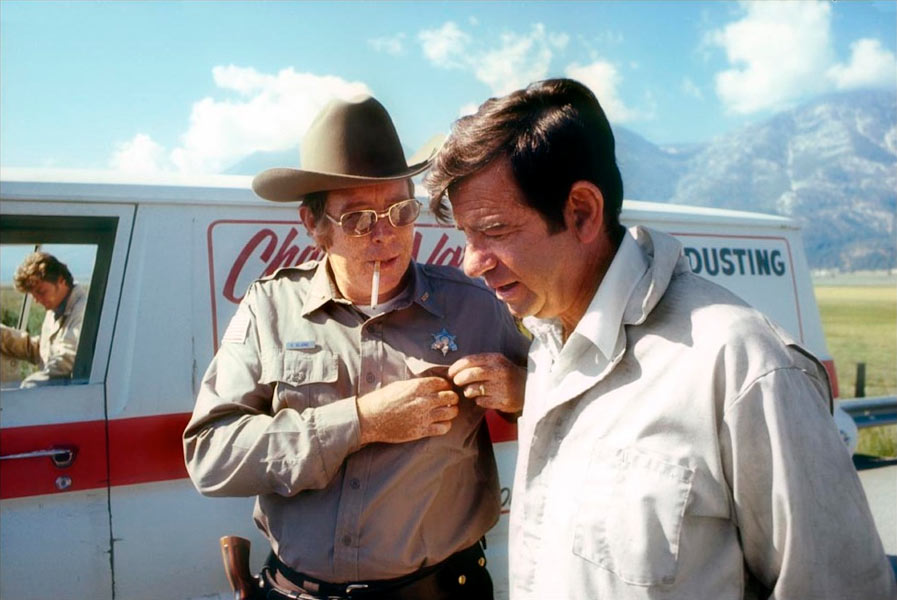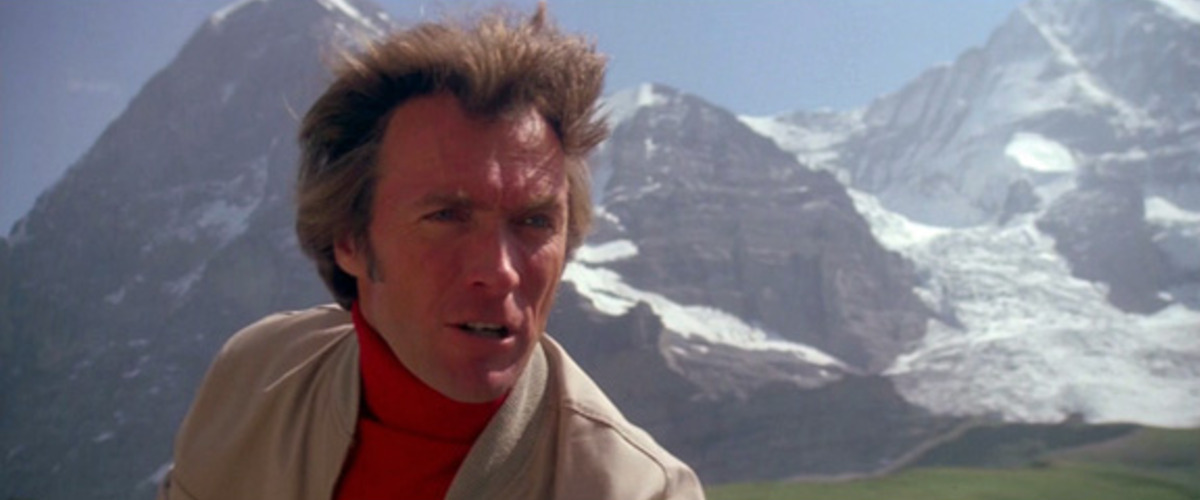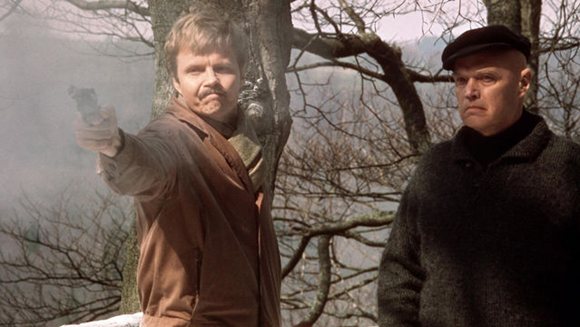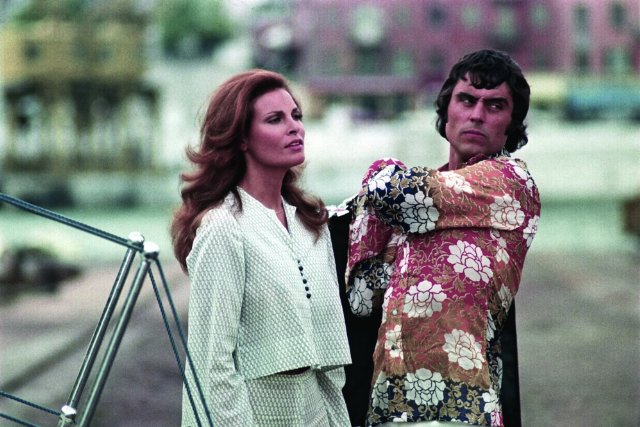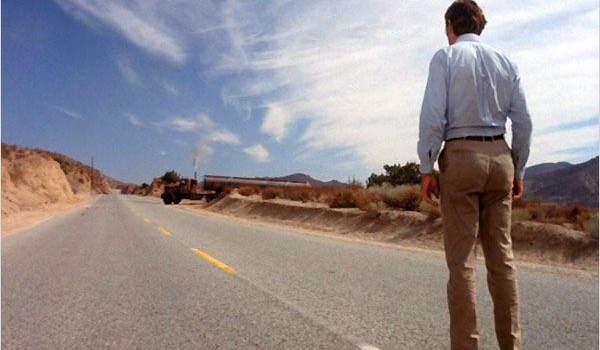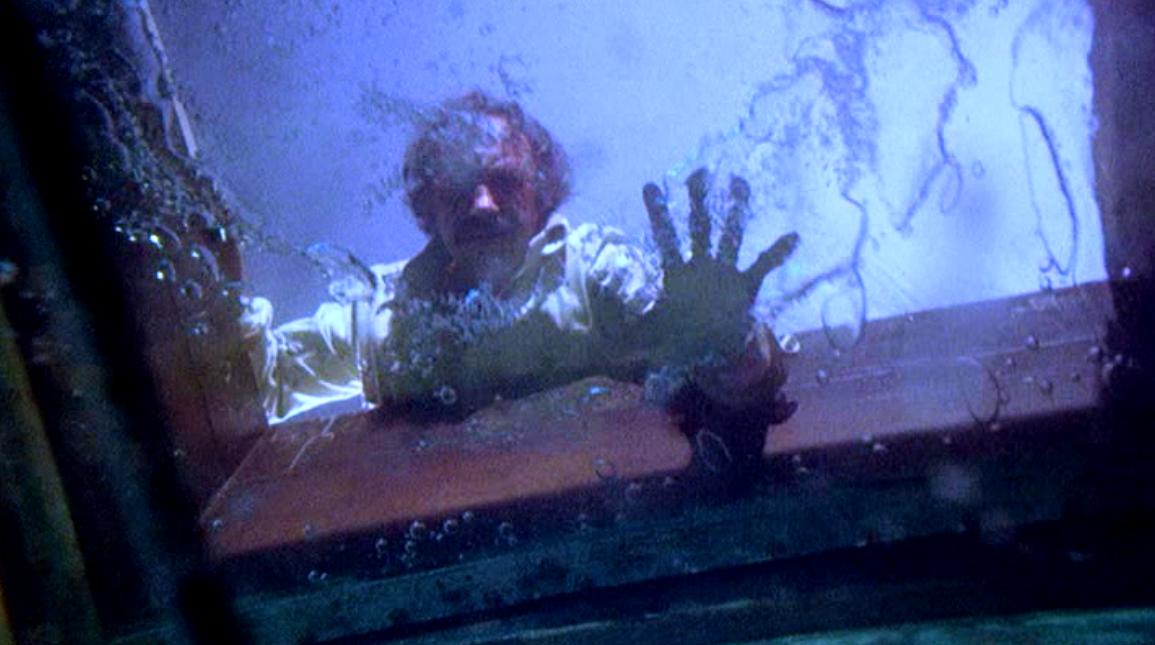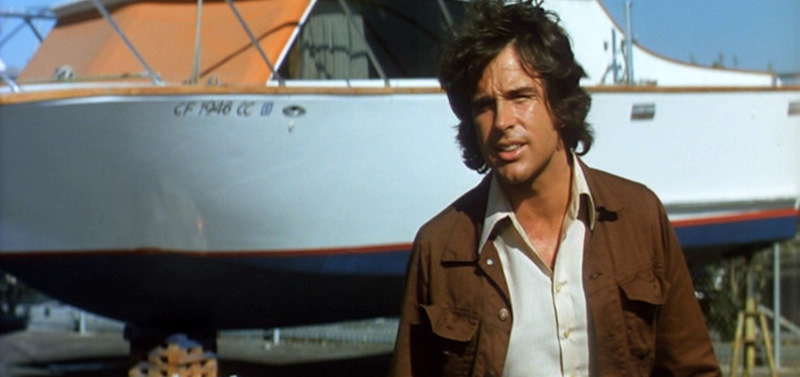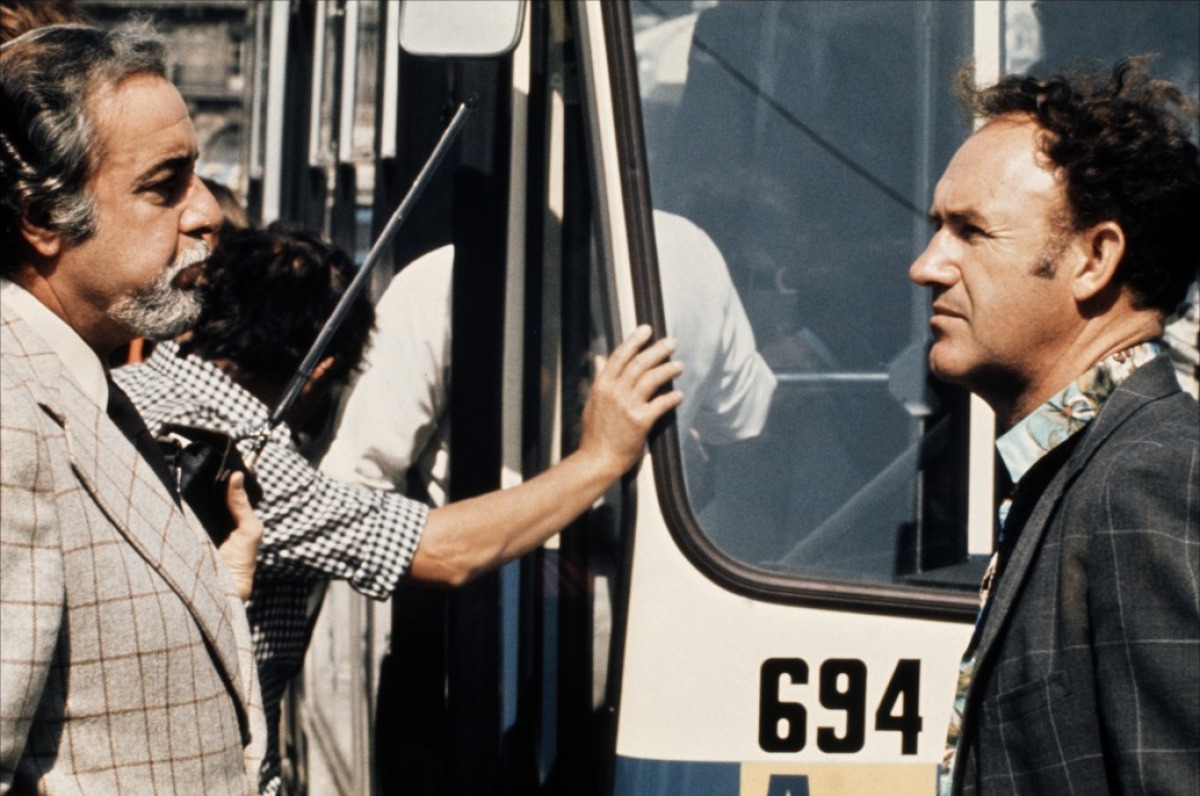The 1970’s were a great decade for thrillers, as production code restrictions had been lifted in favor of a ratings system, allowing “R” rated films considerable leeway in the amount of sex and violence that could be included. Armed with this new freedom, filmmakers ran wild making movies that titillated and thrilled audiences, resulting in some of the best (and worst) thrillers ever made.
These are 20 films that either did not connect with audiences at the box office or for some other reason have been somewhat overlooked in the years since their release, and might be worth re-visiting or even seeing for the first time.
20. How Awful About Allan (1970)
Plot: Allan (Anthony Perkins) succumbs to hysterical blindness after an accident in which he caused a fire that killed his father and facially scarred his sister Katherine (Julie Harris). One his return home from a mental hospital to live with Katherine, Allan has partially overcome his blindness, but his vision is still very blurry.
Allan’s former fiancee Olive (Joan Hackett) attempts to reconnect with him, but Allan is bothered when his sister rents out a room in the house to a mysterious boarder who can only speak in a hoarse whisper. Allan comes to believe the boarder is out to kill him before the truth is revealed and Allan seems to be cured…or is he?
Why it’s great: Only in a time like 1970 could you have acting talents as great as Anthony Perkins, Julie Harris and Joan Hackett appearing in a made for TV movie. But this was before cable, and so network made for TV movies were actually big deals and How Awful About Allan, while not a masterpiece, is still a far better than average thriller.
The film keeps the viewer on the edge of their seat trying to figure out what is happening to Allan as he struggles to separate reality from illusion. The film is somewhat in the tradition of the 1962 hit Whatever Happened to Baby Jane (screenwriter Henry Farrell also wrote Baby Jane) as well as Hitchcock’s Psycho.
19. The Town That Dread Sundown (1976)
Plot: In 1946 in the town of Texarkana, Texas, a killer dubbed ‘the Phantom’ carries out a series of attacks on the locals. First a couple is attacked, then another couple are found dead, and the local authorities call in well known crime fighter and Texas Ranger J.D. Morales (Ben Johnson) to try and track down the assailant.
After the murder of another couple after a high school prom, the town is in a panic. Helen Reed (Dawn Wells) is attacked in her home by the Phantom and her husband is killed, but she escapes from the lunatic. Finally, Morales tracks down the killer and chases him into the woods.
Why it’s great: On the heels of the success of The Texas Chainsaw Massacre in 1974, numerous low budget horror and slasher ‘shlock-fests’ were made with the idea of cashing in on the trend. Produced and directed by Charles B. Pierce, The Town That Dreaded Sundown was made by American International Pictures, a studio specializing in this type of film.
The Town That Dreaded Sundown is far better than most, however, featuring the brooding presence of Ben Johnson as Morales and the always perky Dawn Wells as the perfect victim. Audiences were kept on the edge of their seat, and responded with a box office return of 5 million dollars, realizing a hefty profit for AIP. If you’re in the mood for some gore, check this one out.
18. Two Minute Warning (1976)
Plot: An unknown sniper places himself in position before a championship football game at the Los Angeles Coliseum. Spotted by the aerial Goodyear blimp, the police, headed by Captain Peter Holley (Charlton Heston) and Chris Button (John Cassavetes) are called in to stop him.
As the police try to devise a plan to take out the sniper, various fans at the game are introduced and their back stories are explained. Former NFL quarterback Joe Kapp plays the quarterback in the film. Finally, just after the two minute warning, the SWAT team moves in on the sniper.
Why it’s great: Two Minute Warning was made in the style of the disaster genre that had been very popular in the early part of the decade, but was on the wane when this film was released in later 1976. The movie is really more of a thriller, however, as the audience is kept in suspense as the police deal with the problem of catching a sniper who has so many people at risk during a public event.
Two Minute Warning is similar to but not as successful as 1977’s Black Sunday, in which the Super Bowl is threatened by a terrorist plot, but the film is still a taut and engaging thriller that is worth seeing.
17. The Killer Elite (1975)
Plot: Locken (James Caan) and Hansen (Robert Duvall) are best friends who work as contractors for an organization called Com-Teg, carrying out CIA assignments. They help a defector escape, but Hansen has been bought out by a rival group, and he kills the defector and shoots Locken, wounding him in his elbow and knee.
After Locken is rehabilitated, he takes another Com-Teg assignment, protecting an Asian client, Yuen Chung. It’s a perfect assignment for Locken, as his old friend Hansen is part of the group trying to assassinate Yuen Chung, and it gives Locken a chance for some much needed revenge.
Why it’s great: The Killer Elite was directed by Sam Peckinpah, who made some of the great action and violence films of the late ‘60s and early ’70’s such as The Wild Bunch, Straw Dogs and The Getaway. This film is typically violent and uneven, but the theme of betrayal and revenge between former friends and allies makes for great suspense and moments of brilliant tension.
Unfortunately, The Killer Elite flopped at the box office (as most of Peckinpah’s later films did) but it has developed something of a cult following and now is highly regarded.
16. Winter Kills (1979)
Plot: Nick Keegan (Jeff Bridges), the son of a wealthy tycoon Pa Keegan (John Huston) hears a death-bed confession by a convict Arthur Fletcher claiming to be the second of two assassins who shot President Timothy Keegan, Nick’s older half brother. Nick goes to Philadelphia to investigate the shooting, which happened many years earlier, and he begins to uncover evidence of a conspiracy.
As he goes from place to place trying to find the truth, all of the people that he meets who were connected to his half-brother suddenly seems to find themselves dead. Nick is determined to find the truth, however, despite the interference of his meddling, domineering father (John Huston).
Why it’s great: Many conspiracy films came out in the 1970’s, and of these a number of them concerned themselves with assassinations related to political figures. Winter Kills was released late in the decade, after this trend had largely peaked, and so failed at the box office despite the all star cast.
The film, which had a troubled production history including being financed supposedly by drug dealers, has a dark, black humor that was somewhat rare for a conspiracy film. Directed by screenwriter William Richert, the movie was based on a book by Richard Condon.
15. Audrey Rose (1977)
Plot: A man named Elliot Hoover (Anthony Hopkins) is stalking Janice and Bill Templeton and their 11 year old daughter, Ivy. Hoover believes that Ivy is the reincarnation of his daughter, Audrey Rose, who along with his wife was killed in a car crash just moments before Ivy was born.
Ivy begins to act out behavior that starts to convince Janice (Marsha Mason) that Elliot is actually onto something, despite the continued disbelief of her husband. Finally, Elliot is arrested and put on trial for kidnapping Ivy, and he must prove to the court that his actions were necessary in order to give his dead daughter the peace for which she is looking.
Why it’s great: Aside from conspiracy films, ghost and reincarnation thrillers were also popular in the 1970’s. Unfortunately, the box office failure of Audrey Rose (as well as Exorcist II: the Heretic, also released in the same year, 1977) did much to dampen this sub-genre. The film was directed by veteran Robert Wise and taken from a popular novel of the same name.
Marsha Mason is excellent as Ivy’s mother, torn between her husband’s skepticism and her desire to believe in reincarnation, and Anthony Hopkins lends an air of credibility to the film. Hopkins would appear in another super-natural thriller the following year, Magic, which fared better at the box office than Audrey Rose.
14. The Laughing Policeman (1973)
Plot: Dave Evans, the partner of Jake Martin (Walter Matthau), a San Francisco policeman, is gunned down on a public bus by a hit man. Martin is obsessed with finding evidence to prove businessman Harry Camerero murdered his wife, and he comes to believe that the hit on the bus is connected to the Camerero murder.
Jake and his new partner, Inspector Leo Larson (Bruce Dern) are assigned to interview suspects in the case and despite Jake’s best efforts to shut Larson out from his suspicions, the two begin to uncover information that may help them break the case and avenge Evans’ death.
Why it’s great: Walter Matthau made his name play Oscar Madison, the slovenly roommate in The Odd Couple, and by 1973 Matthau was eager to break out of the comedic mold by playing tough guys, which he did in both this film and Charley Varrick. Bruce Dern and Louis Gossett, Jr. were also along for the ride, and the film was set in scenic San Francisco and directed by Stuart Rosenberg, who also did Cool Hand Luke.
Audiences didn’t appear ready for the change of direction of Matthau, and the film died an abysmal death at the box office, so Matthau returned to comedy and found success again a few years later in The Bad News Bears. The Laughing Policeman, though, is an unheralded hard boiled gem that now demands to be seen and appreciated by audiences at last.
13. Images (1972)
Plot: Children’s author, Cathryn (Susannah York) receives a series of disturbing phone call from a woman saying that her husband is having an affair.
When her husband (Rene Auberjonois) comes home, he finds his wife hysterical, even to the point of seeing him as a completely different man, before she finally regains her senses. Disturbed, he takes Cathryn to an isolated cottage in the countryside, but their she finds it even more difficult to discern reality from fantasy and delusion.
Why it’s great: Altman wrote and directed this film, which definitely falls into the category of psychological terror. The film was critically praised, with York winning the best actress award at Cannes, but did not connect with audiences and failed at the box office; Altman’s The Long Goodbye also flopped at the box office the next year, but The Long Goodbye has since become embraced by critics and cineastes, while Images remains relatively forgotten.
Atmospheric and tense, with great use of John Williams’ score and various sound effects, Images recalls Polanski’s Repulsion, another film in which a woman begins to have difficulty discerning reality from illusion.
12. Twilight’s Last Gleaming (1977)
Plot: A rogue U.S. Air Force General, Lawrence Dell (Burt Lancaster) escapes from prison and along with two accomplices, infiltrates an ICBM complex in order to gain control of its nuclear missiles. They contact the President and issue their demands: a ten million dollar ransom as well as the public release of a document detailing absolute proof that the U.S. knew the war in Vietnam was futile but kept going in order to show the Soviet Union our commitment to deter the spread of Communism.
After much debate, an elite team led by General Mackenzie (Richard Widmark) is dispatched to stop the terrorists, but the President must finally agree to be taken hostage in a last ditch attempt to save the situation.
Why it’s great: Twilight’s Last Gleaming was directed by hard boiled filmmaker Robert Aldrich, who make a number of great thrillers in the 1960’s and 70’s, as well as the comic masterpiece The Longest Yard. This film failed badly at the box office on its release in 1977, possibly because America’s experience in Vietnam was not yet far enough behind us for audiences to feel comfortable with a film that so bluntly deals with our failure in that war.
With an all star cast of veteran Hollywood actors, however, including Burt Lancaster, Richard Widmark, Joseph Cotton and Melvyn Douglas, Twilight’s Last Gleaming is a film that is certainly worth seeing. Lancaster also starred in a similar film, Seven Days in May, in which he also played a renegade member of the U.S. Military.
11. Don’t Look Now (1973)
Plot: Christine, the daughter of John (Donald Sutherland) and Laura (Julie Christie) Baxter, drowns in a stream behind their house in England. Sometime later, John accepts a commission to go to Venice and restore an old church. Laura is depressed about the death of their daughter (which she partly blames on John) until she encounters two sisters in a Venice restaurant.
The blind sister claims she has ‘second sight’ and can see Christine with the couple, and that the girl is happy. Laura is thrilled by this and goes along with the sisters until she is called back to England after their son has a minor accident at boarding school. John is perplexed when he appears to see visions of his dead daughter in the streets of Venice and finally sees an image that portends his own possible doom.
Why it’s great: Don’t Look Now was an English-Italian co-production, directed by esteemed former cinematographer Nicholas Roeg. Although some might not consider Don’t Look Now to be overlooked due to its fairly good box office take and controversial sex scene between Christie and Sutherland, the film’s avant-garde cinematography and ‘arty’ editing have caused it to be thought of as a highly unconventional thriller.
While Don’t Look Now was clearly influenced by director Alfred Hitchcock, particularly its unconventional use of color and point-of-view shots, the film’s style also influenced many films and filmmakers to come. Don’t Look Now is definitely worth…another look
10. Charley Varrick (1973)
Plot: Charley Varrick (Walter Matthau) a former stunt pilot, robs a small town bank with two accomplices and his wife. The job goes awry and one of the accomplices and his wife are killed by police, but he and Sullivan (Andy Robinson) survive, finding they have stolen an extraordinary amount of money.
Surmising correctly that the bank is a drop point for the mob, Varrick wants to lay low, but Sullivan wants to spend the money. Eventually mobsters Boyle (John Vernon) and Molly (Joe Don Baker) come after the pair, killing Sullivan. Varrick flies his plane to Reno, where he confronts Molly and Boyle in a final showdown.
Why it’s great: Directed by Don Siegel, fresh off his success with Dirty Harry, Charley Varrick is a typical neo-noir thriller in the sense that the audience is rooting for the bad guys to get away with a crime (particularly since they are stealing from even worse bad guys…)
Matthau’s Varrick is a particularly cagey and intelligent criminal, staying one step ahead of his pursuers until the very end, and the audience identifies with him and enjoys the chase. Don Siegel made the film in his usual tough and gritty style, utilizing realistic Reno, NV locations that give a film the sense of cinema verite. Long overlooked, Charley Varrick has begun to develop a cult following that is putting the film on the map.
9. The Eiger Sanction (1975)
Plot: Jonathan Hemlock (Clint Eastwood) is an art professor whose sideline is collecting art masterpieces, which he finances by performing hits or ‘sanctions’ for a covert government agency headed by Dragon, an albino with hemophilia. An agent named Wormwood has been killed by two agents while stealing some microfilm, and Dragon wants Hemlock to perform sanctions on the two killers.
After killing the first one, Hemlock (a former mountain climber) goes to climb the notoriously dangerous Eiger mountain with the help of his friend Ben Bowman (George Kennedy) in the hopes of performing his second sanction on one of the other climbers.
Why it’s great: The Eiger Sanction performed poorly at the box office when it was released in 1975, which may have been due to the somewhat esoteric subject of mountain climbing as the basis for a thriller.
Eastwood directed the film himself, which features many great locales, tense mountain climbing scenes and beautiful woman, as well as an outstanding cast including the always reliable George Kennedy and Jack Cassidy in a strange role as Miles Mellough, Hemlock’s gay adversary. Clint plays his usual persona with typical aplomb, and that and the surprise ending make The Eiger Sanction an overlooked film worth seeing.
8. The Odessa File (1974)
Plot: Freelance German journalist Peter Miller (Jon Voight) is given the diary of a German Jew who has killed himself on the day Kennedy was assassinated in 1963. The diary contains the story of the man’s imprisonment at Riga concentration camp and the atrocities inflicted by the brutal head of the camp, Edward Roschmann (Maximilian Schell).
Miller begins to investigate the whereabouts of Roschmann and discovers an organization in Germany called Odessa that is hiding and giving new identities to former SS officers. Miller agrees to infiltrate Odessa with the help of some zionist Nazi hunters, and although his cover is blown, he ends up finding the ‘Odessa file’, which actually details the names and new identities. This eventually leads Miller to a showdown with Roschmann, who is a respectable businessman now running an electronics company.
Why it’s great: Many felt that The Odessa File – based on a novel by Frederick Forsyth – was a disappointment, particularly compared to the adaptation of Day of the Jackal, based on a Forsyth novel and released the year before. But The Odessa File is a taught and suspenseful thriller, with good performances by Voight and Schell and an interesting reveal at the end.
The film also was noteworthy in that the real “Butcher of Riga”, Edward Roschmann, was apprehended by Argentinian police after the film came out, although he later skipped bail and died in Paraguay shortly thereafter. This was one of several high quality Nazi hunter films released in the mid 1970’s.
7. Hustle (1975)
Plot: A prostitute named Gloria Hollinger is found dead on a stretch of isolated beach, and LAPD Sgt. Phil Gaines (Burt Reynolds) is assigned to the case. Gaines and his partner feel Gloria’s death was a suicide, and are encouraged to close the case quickly by their commanding officer.
But shortly before her death, Gloria had attended a party at the home of corrupt attorney Leo Sellers (Eddie Albert), a man who is also known to patronize Phil’s girlfriend, French prostitute Nicole Britton (Catherine Deneuve). When Gloria’s headstrong father (Ben Johnson) decides to investigate the death on his own, he finds out about Sellers, leaving Gaines with nothing but trouble on his hands.
Why it’s great: Directed by Robert Aldrich, Hustle carries the neo-noir tradition forward with its tale of death, vice and corruption in the City of Angels. Burt Reynolds’ Phil Gaines is a man who must walk a fine line as he navigates through a murder investigation that threatens to sink his career.
Hustle was only a modest box office success at the time of its release, despite the cast, and has always been somewhat underrated. Now the film deserves to be seen for what it is – an example of a great hard boiled 1970’s thriller.
6. The Boys from Brazil (1978)
Plot: Nazi hunter Ezra Lieberman (Lawrence Olivier) is contacted by Barry Kohler (Steve Guttenburg), who has discovered notorious Nazi Josef Mengele (Gregory Peck) living in Paraguay. Though Kohler is killed shortly thereafter, he is able to get enough information to Lieberman that the Nazi hunter begins to investigate.
He discovers that Mengele had stored Hitler’s frozen DNA and, in the mid 1960’s, had used the DNA to impregnate a number of surrogate mothers in Brazil. These children had been sent out all over the world for adoption, and now Mengele is systematically killing their adopted fathers so he can reclaim his ‘boys’. Eventually Lieberman tracks one of the boys to a home in rural America, where he has a final showdown with Mengele and some Dobermans.
Why it’s great: The Boys from Brazil was another of the Nazi hunter movies that came out in the 1970’s, but this one was released rather late in the cycle and was based on a story by novelist Ira Levin, author of Rosemary’s Baby and The Stepford Wives.
The rather fantastic tale of a clan of junior Hitlers being born was a little hard for audiences to swallow, and the film performed only marginally at the box office. But The Boys from Brazil is a well acted, solid thriller, directed by Franklin J. Schaffner – who also did Patton and The Planet of the Apes – and so should not be overlooked just because the story is a bit hard to believe.
5. The Last of Sheila (1973)
Plot: Movie producer Clinton Greene (James Coburn) invites six film industry people on his yacht one year exactly after his wife Sheila, a gossip columnist, was killed by a hit and run driver during a party. All of the people one the yacht except one were at the party, and Clinton tells them that they are going to participate in an elaborate game in Sheila’s memory.
Cards are given out to each person with a secret on them and each night the group goes into port to follow a series of clues and discover that night’s secret. It quickly becomes clear that the secrets on the cards are actual secrets of each of the people aboard the yacht (though nobody has their own secret) and when Clinton is murdered on the second night in port, the game turns very real and very deadly. After one of the guests commits suicide, another guest puts the pieces together and finally figures out the last of Sheila.
Why it’s great: A clever script written by Steven Sondheim and Anthony Perkins (that won the 1974 Edgar Award for best screenplay by the Mystery Writers of America), The Last of Sheila was only a very modest success when released in the summer of 1973. But the film’s interesting plot, macabre humor and sly ending have beguiled many people for years, and the film now is something of an overlooked classic.
Additionally, the film has a great cast including James Mason, Richard Benjamin, Dyan Cannon, Raquel Welch and the late Joan Hackett. Check out The Last of Sheila and see if you can solve the mystery!
4. Duel (1971)
Plot: David Mann (Dennis Weaver) is an electronics salesman on a business trip driving on a two lane highway in his small red sedan. He passes a slow moving tanker truck, only to have the truck pass him and get back in front of him, blocking his way.
The cat and mouse game continues along the highway, accelerating in pace and seriousness, until Mann is almost killed. Panicked now, he goes into a diner, but sees the truck parked in the lot and tries to figure out who the driver is so he can confront him. After being unable to find the driver, Mann goes back on the road, only to encounter the truck again and, after a lengthy battle, the story comes to a fiery conclusion.
Why it’s great: Duel was a made for TV movie, shown on NBC in late 1971. The movie was so successful, NBC expanded the original running time was some extra footage, and the film was actually released as a feature in Europe in 1972.
Duel shows Spielberg’s penchant for being able to direct great suspense sequences, something that would become even more evident a few years later when he made Jaws. Dennis Weaver is great as the average man threatened by the ultimate faceless, nameless nightmare and Spielberg ratchets up the tension until the viewer can hardly stand it and the final showdown, at last, takes place.
3. Night Moves (1975)
Plot: Harry Moseby (Gene Hackman), an L.A. private investigator, is hired by former actress Arlene Iverson to find her 16 year old daughter, Delly Grastner (Melanie Griffith, in an early role). Harry’s wife Ellen (Susan Clark) is cheating on him, but despite this distraction he begins to work on the case, tracking down Delly’s last boyfriend, Quinten an auto mechanic.
Harry gets a tip that Delly is living in the Florida Keys with her step-father, Tom Iverson and goes after her; there he finds Delly and has a brief affair with Paula (Jennifer Warren). Delly eventually agrees to return to Los Angeles with Harry to live with her mother and on his return he tries to work out his problems with Ellen. But some surprise news about Delly comes as a shock and may lead Harry to uncover a deeper plot.
Why it’s great: In 1974, Gene Hackman appeared in Francis Ford Coppola’s The Conversation, a neo-noir film about a sound recordist that performed only moderately at the box office, but achieved great critical acclaim, winning the Palm d’Or at Cannes. The next year, he starred in Night Moves, directed by another ‘new Hollywood’ director, Arthur Penn, which failed at the box office on its initial release.
Like The Conversation, however, the film almost immediately began to acquire a strong critical reputation and a following among film noir devotees. Featuring an early and provocative appearance by Melanie Griffith (the 16 year old filmed some nude scenes for the movie), Night Moves is now regarded as a cult classic and, according to some critics, Penn’s greatest film.
2. The Parallax View (1974)
Plot: Senator Charles Carroll is assassinated during a public event atop the Seattle Space Needle, an event witnessed by newswoman Lee Carter (Paula Prentiss) and many others. Three years later, Carter visits newspaper reporter Joe Frady (Warren Beatty) and tells him that six people who witnessed the event have been murdered and she is worried she is next; her fears are justified as she dies shortly thereafter.
Picking up on her leads, Frady uncovers a group called The Parallax Corporation, which recruits political assassins. After visiting the senator’s former aide, Austin Tucker (William Daniels) aboard his boat, the boat explodes killing Tucker, but Frady survives. As he is believed to be dead, Frady can now go undercover to join Parallax and find out about the treacherous group from the inside.
With his only ally, editor Bill Frintels (Hume Cronyn) poisoned by Parallax, Frady knows that he is all alone in his battle to expose the killers.
Why it’s great: Many films of the 1970’s focused on various conspiracy theories, but The Parallax View suggested a vague conspiratorial threat, as opposed to an earlier film, Executive Action (1973) that focused directly on the Kennedy assassination. The lack of specificity in who the Parallax Corporation is and why they were trying to kill various political officials, allowed the film greater latitude and enhanced the sense of paranoia and distrust.
As a result, over time, The Parallax View has gained a growing reputation, and it is now considered one of the best conspiracy thriller of the 1970’s. Director Alan J. Pakula had previously made Klute and followed this film with All the President’s Men, make for a trio of top flight conspiracy films.
1. French Connection II (1975)
Plot: Popeye Doyle (Gene Hackman) arrives in Marseilles, France in search of the elusive drug kingpin Charnier (Fernando Rey) who escaped from New York at the end of the first film.
He is met by Henri Barthelemy (Bernard Fresson) who, along with the other French police adopt an antagonistic attitude towards Doyle, particularly after his unpredictable behavior causes the death of an undercover officer during a drug raid. Charnier spots Doyle and has his men kidnap the New York cop; they proceed to inject him with heroin by force, causing him to become a helpless addict.
Eventually Doyle is returned to French police and Barthelemy assists him in kicking the drug cold turkey. After his recovery, Doyle and Barthelemy eventually put their differences aside and work together to bust the drug enterprise of Charnier in an explosive climax.
Why it’s great: French Connection II was directed by great action and suspense director John Frankenheimer; despite its big buildup, the film did only marginally well financially, which may have had to do with the fact that it was released during the summer in which Jaws ruled the box office. But the film also may have failed because its harsh portrayal of Doyle’s humiliating forced drug addiction and subsequent ‘cold turkey’ withdrawal may have also been too much for audiences to accept.
The film is a gritty masterpiece from the moment that Doyle sets foot on French turf, finding himself in conflict with virtually everyone, including the people who are supposed to be on his side. The final sequence, in which the police tail a suspect to uncover the drug warehouse and then Doyle sets out on foot to chase down Charnier, is a masterwork of suspense filmmaking. See this neglected classic.
Read more at http://www.tasteofcinema.com/2014/20-overlooked-70s-thrillers-that-are-worth-your-time/#fZPgHyQ4FdEl6YYm.99

